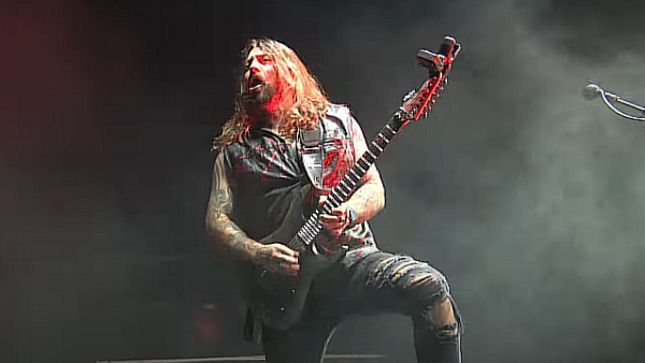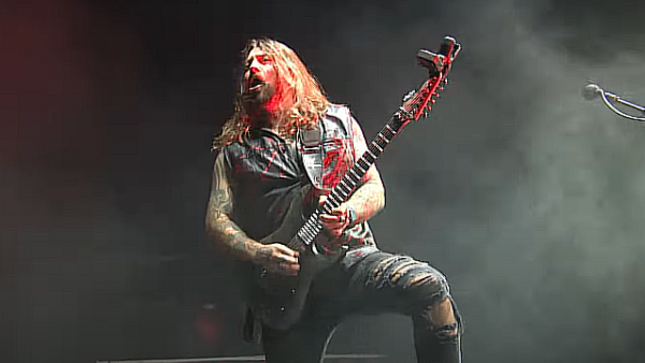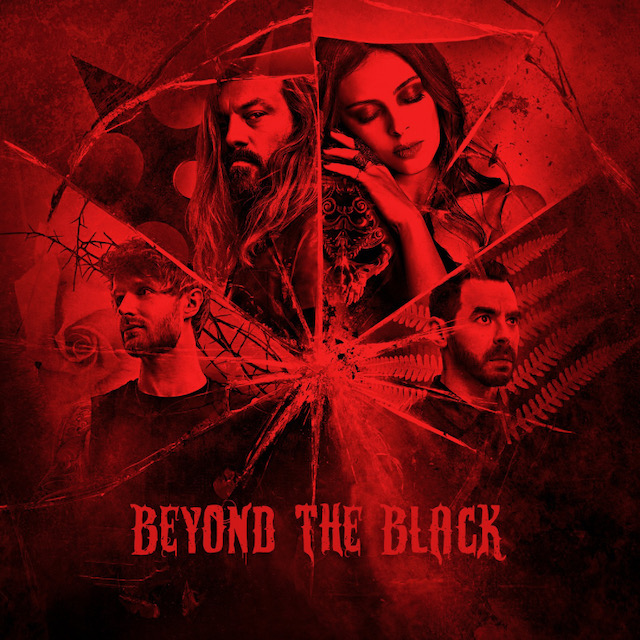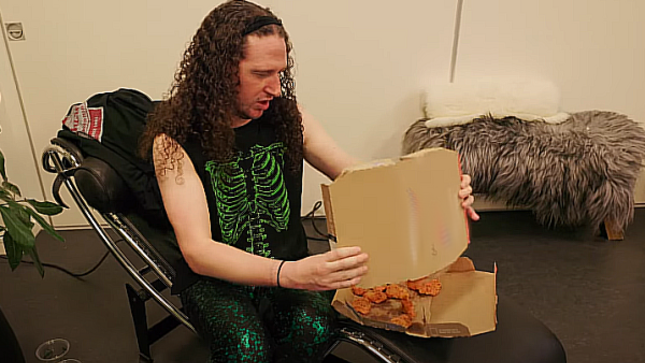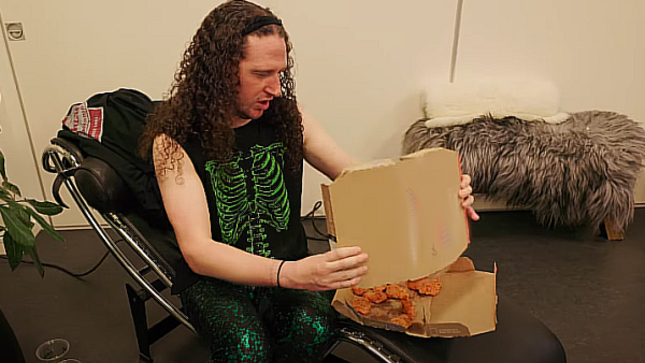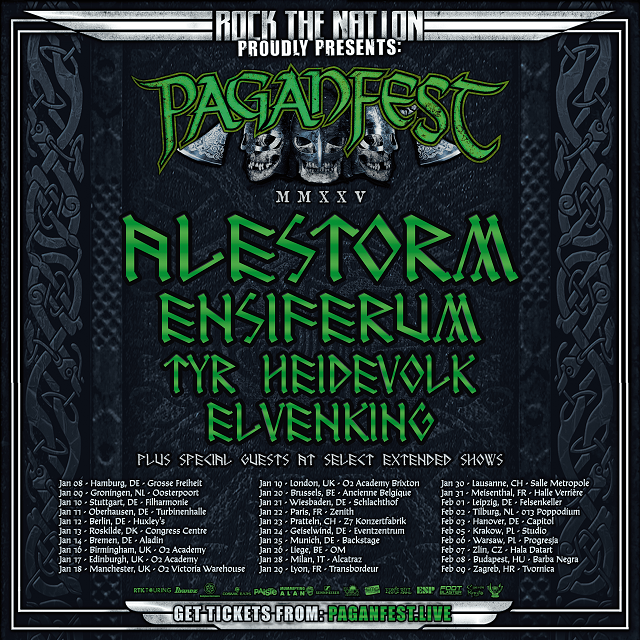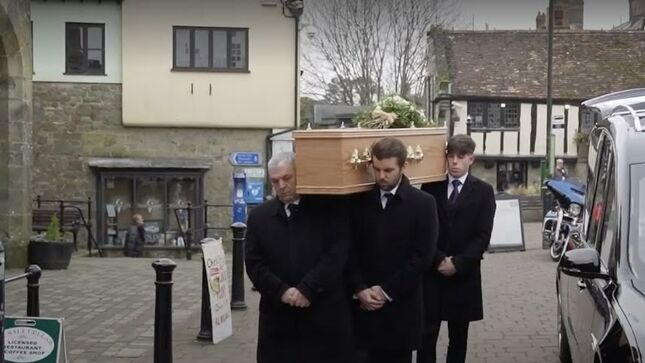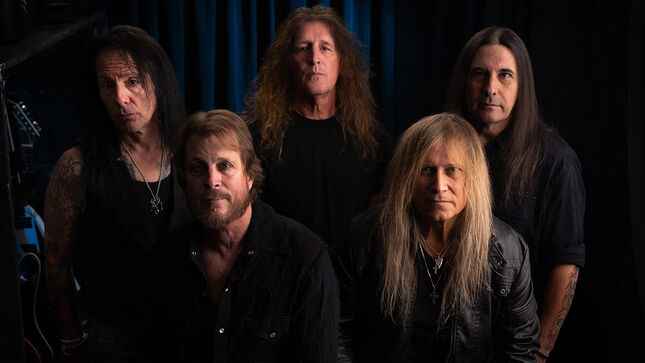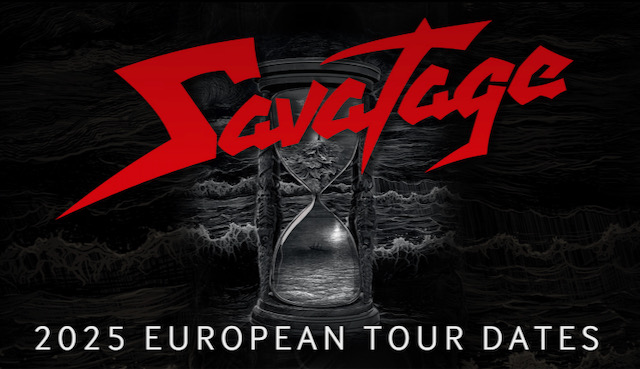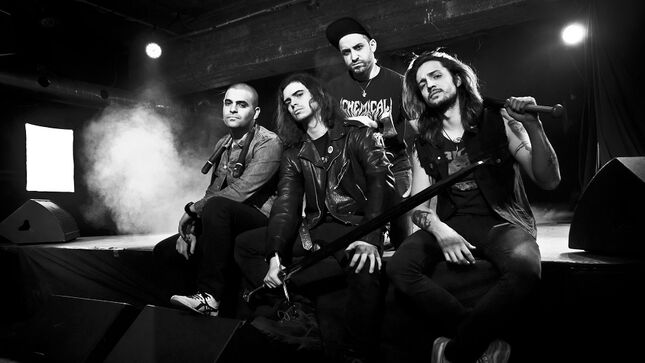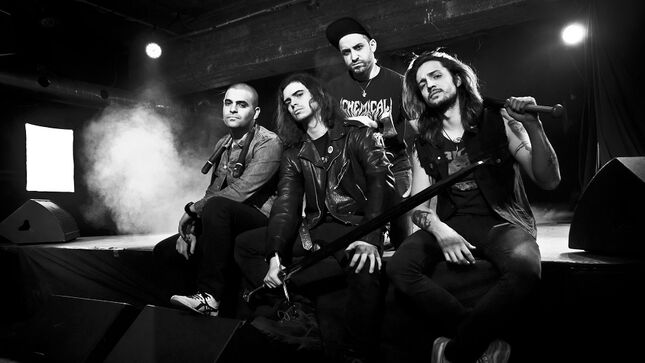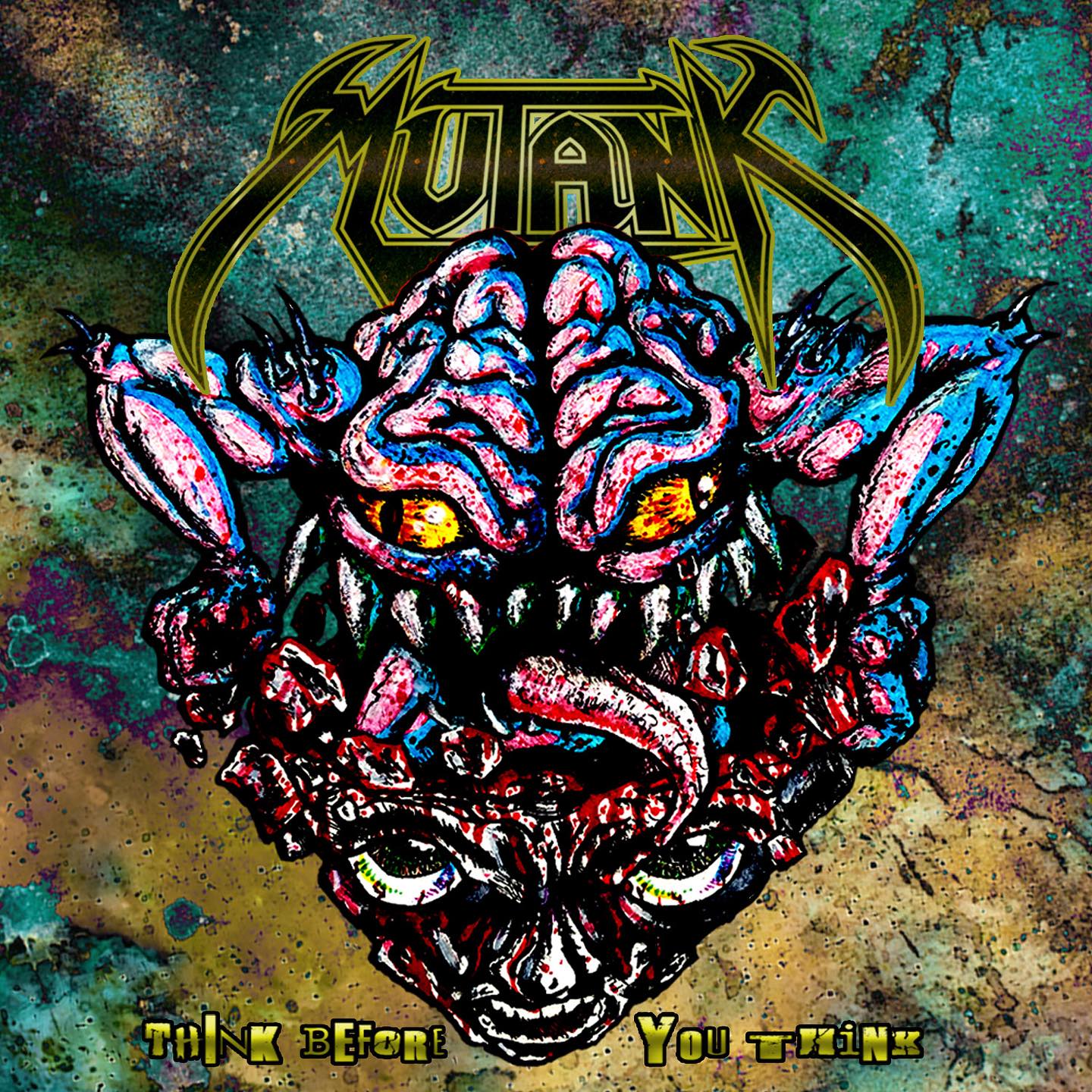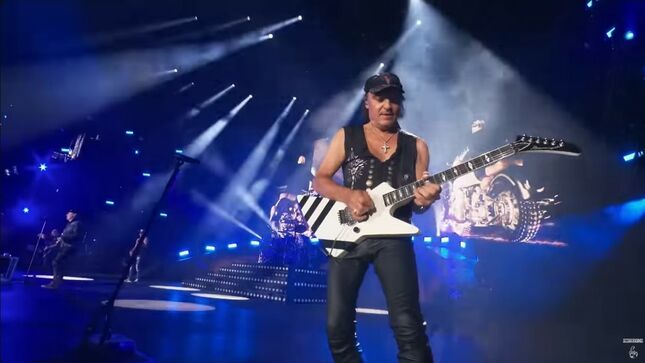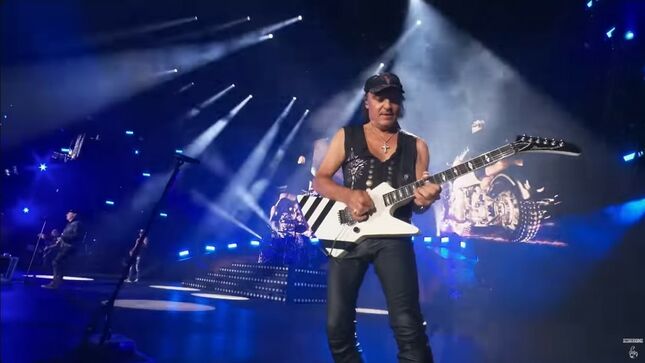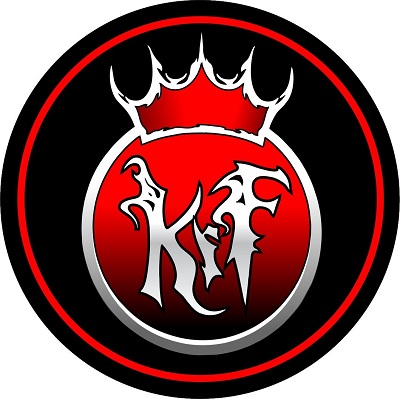
Feature Photo: Stoned59, CC BY 2.0
Bob Dylan’s journey from a small-town Midwestern boy to a global cultural icon is one of modern music’s most compelling stories. Born Robert Allen Zimmerman on May 24, 1941, in Duluth, Minnesota, and raised in the mining town of Hibbing, Dylan grew up immersed in a world of radio hits and folk tunes that fueled his curiosity for storytelling through music. By his teenage years, he was playing in local bands, already laying the groundwork for the groundbreaking career that lay ahead.
Dylan’s trajectory shifted in 1961 when he moved to New York City, seeking the heartbeat of America’s folk music revival. Settling in Greenwich Village, his performances in intimate clubs caught the attention of Columbia Records, where he signed his first recording deal. His self-titled debut album, released in 1962, primarily featured traditional folk songs but hinted at his budding songwriting prowess with two original tracks.
What followed was an era-defining body of work that reshaped the music landscape. Dylan’s 39 studio albums, including The Freewheelin’ Bob Dylan (1963), Bringing It All Back Home (1965), and Blood on the Tracks (1975), are a testament to his ever-evolving artistry. Singles such as “Blowin’ in the Wind,” “Like a Rolling Stone,” and “Knockin’ on Heaven’s Door” became anthems of their time, blending poetic insight with innovative musicality. His embrace of electric instruments in the mid-1960s challenged conventions and expanded the boundaries of folk and rock music.
Accolades have followed Dylan throughout his career. He has earned ten Grammy Awards, an Academy Award for Best Original Song with “Things Have Changed,” a Presidential Medal of Freedom, and the 2016 Nobel Prize in Literature—an unprecedented honor recognizing the literary depth of his lyrics. Each award underscores his profound influence on not just music but the broader cultural narrative.
Beyond his unparalleled musical contributions, Dylan’s ventures into acting, painting, and even whiskey production through his Heaven’s Door Spirits brand reflect his restless creativity. His philanthropy includes support for organizations like MusiCares and the World Food Programme, the latter benefiting from proceeds of his album Christmas in the Heart.
Dylan’s artistry has always been deeply intertwined with social consciousness. Songs like “The Times They Are a-Changin’” and “Hurricane” capture the spirit of societal shifts, offering listeners both solace and a call to action. His ability to channel universal struggles and joys has made him not only an artist of his generation but a timeless voice across generations.
To this day, Dylan’s enigmatic personality and relentless pursuit of artistic expression continue to captivate audiences. Whether through his ever-transforming musical style, his visual art exhibitions, or his carefully guarded private life, Dylan remains a figure of fascination and reverence.
(‘ – A)
“‘Cross the Green Mountain” – The Bootleg Series Vol. 8: Tell Tale Signs (2008)
“‘Til I Fell in Love with You” – Time Out of Mind (1997)
“10,000 Men” – Under the Red Sky (1990)
“2 Dollars and Ninety Nine Cents” – The Bootleg Series Vol. 11: The Basement Tapes Complete (2014)
“2 X 2” – Under the Red Sky (1990)
“26 Storeys High” – Unreleased (Recorded in 1985 but unreleased)
“4th Time Around” – Blonde on Blonde (1966)
“7 Deadly Sins” – Traveling Wilburys Vol. 3 (1990)
“Abandoned Love” – Biograph (1985)
“Absolutely Sweet Marie” – Blonde on Blonde (1966)
“Ain’t Gonna Go to Hell (For Anybody)” – The Bootleg Series Vol. 13: Trouble No More 1979–1981 (2017)
“Ain’t Gonna Grieve” – The Bootleg Series Vol. 9 – The Witmark Demos: 1962–1964 (2010)
“Ain’t No Man Righteous (No Not One)” – The Bootleg Series Vol. 13: Trouble No More 1979–1981 (2017)
“Ain’t Talkin’” – Modern Times (2006)
“All Along the Watchtower” – John Wesley Harding (1967)
“All-American Boy” – The Bootleg Series Vol. 11: The Basement Tapes Complete (2014)
“All I Ever Loved is You” – Unreleased (Time Out of Mind outtake)
“All I Really Want to Do” – Another Side of Bob Dylan (1964)
“All I’ve Got is All I Want” – Unreleased
“All Over You” – The Bootleg Series Vol. 9 – The Witmark Demos: 1962–1964 (2010)
“All the Tired Horses” – Self Portrait (1970)
“All the Way” – Unreleased
“All the Way Down” – Unreleased
“All You Have to Do is Dream” – The Bootleg Series Vol. 11: The Basement Tapes Complete (2014)
“Almost Endless Sleep” – Unreleased
“Almost Persuaded” – Unreleased
“Am I Your Stepchild?” – Unreleased
“Amen” – The Bootleg Series Vol. 15: Travelin’ Thru, 1967–1969 (2018)
“And He Killed Me Too” – Bob Dylan 1973: 50th Anniversary Copyright Collection (2023)
“Angel of Rain (Almost Done)” – Unreleased
“Angelina” – The Bootleg Series Volumes 1–3 (Rare & Unreleased) 1961–1991 (1991)
“Any Time” – The Bootleg Series Vol. 11: The Basement Tapes Complete (2014)
“Apple Suckling Tree” – The Basement Tapes (1975)
“Are You Ready?” – Saved (1980)
“As I Went Out One Morning” – John Wesley Harding (1967)
“Average People” – Unreleased (Recorded in 1982)
(B)
“Average People” – Unreleased (Recorded in 1982)
“Baby Coming Back From the Dead” – Unavailable (Recorded in 1985)
“Baby Give It Up” – Unreleased (Recorded in 1979)
“Baby, I’m in the Mood for You” – Biograph (1985)
“Baby, Stop Crying” – Street-Legal (1978)
“Baby, Won’t You Be My Baby” – The Bootleg Series Vol. 11: The Basement Tapes Complete (2014)
“Back Alley” – Unreleased (2010)
“Back to the Wall” – Unreleased (Recorded in 1983)
“Ballad for a Friend” – The Bootleg Series Vol. 9 – The Witmark Demos: 1962–1964 (2010)
“Ballad in Plain D” – Another Side of Bob Dylan (1964)
“Ballad of a Thin Man” – Highway 61 Revisited (1965)
“Ballad of Donald White” – Best of Broadside 1963–1988 (2000)
“Ballad of Easy Rider” – Unreleased
“The Ballad of Frankie Lee and Judas Priest” – John Wesley Harding (1967)
“Ballad of Hollis Brown” – The Times They Are a-Changin’ (1964)
“Ballad of the Gliding Swan” – Unreleased
“Ballad of the Ox Bow Incident” – Unreleased
“Band of the Hand (It’s Hell Time Man!)” – Band of the Hand OST (1986)
“Be Careful (I Don’t Care)” – Unreleased
“Be Not Deceived” – Unreleased
“Belltower Blues” – Unreleased
“Beyond Here Lies Nothin’” – Together Through Life (2009)
“Beyond the Horizon” – Modern Times (2006)
“Big Black Train” – Unreleased
“Big City Blues” – Unreleased
“Big Dog” – The Bootleg Series Vol. 11: The Basement Tapes Complete (2014)
“Billie #30” – Unreleased (2010)
“Billy 1” – Pat Garrett & Billy the Kid (1973)
“Billy 4” – Pat Garrett & Billy the Kid (1973)
“Billy 7” – Pat Garrett & Billy the Kid (1973)
“Billy Surrenders” – Unreleased
“Billy (The Ballad of Billy the Kid)” – Unreleased
“Black Crow Blues” – Another Side of Bob Dylan (1964)
“Black Diamond Bay” – Desire (1976)
“Black Rider” – Rough and Rowdy Ways (2020)
“Blessed Is the Name” – The Bootleg Series Vol. 13: Trouble No More 1979–1981 (2017)
“Blind Willie McTell” – The Bootleg Series Volumes 1–3 (Rare & Unreleased) 1961–1991 (1991)
“Blowin’ in the Wind” – The Freewheelin’ Bob Dylan (1963)
“Blues Club (Playback)” – Unreleased
“Blues Jam” – The 50th Anniversary Collection – 1963 (2013)
“Bob and Eric Blues #1” – The 50th Anniversary Collection – 1964
“Bob Dylan’s 115th Dream” – Bringing It All Back Home (1965)
“Bob Dylan’s Blues” – The Freewheelin’ Bob Dylan (1963)
“Bob Dylan’s Dream” – The Freewheelin’ Bob Dylan (1963)
“Bob Dylan’s New Orleans Rag” – The 50th Anniversary Collection 1963 (2013)
“Bonnie, Why’d You Cut My Hair?” – Unreleased
“Boots of Spanish Leather” – The Times They Are a-Changin’ (1964)
“Born in Time” – Under the Red Sky (1990)
“Borrowed Time” – The Bootleg Series Vol. 16: Springtime in New York 1980–1985
“Bottleneck Polka” – Unreleased
“Bound to Lose, Bound to Win” – The Bootleg Series Vol. 9 – The Witmark Demos: 1962–1964 (2010)
“Bourbon Street” – The Bootleg Series Vol. 11: The Basement Tapes Complete (2014)
“Bowling Alley Blues” – Unreleased
“Bring it Home to Me” – Unreleased
“Bring It On Home” – The Bootleg Series Vol. 11: The Basement Tapes Complete (2014)
“Broadway Strut” – Unreleased
“Brown Skin Girl” – Unreleased (1978)
“Brownsville Girl” – Knocked Out Loaded (1986)
“B-Thang” – Unreleased
“Buckets of Rain” – Blood on the Tracks (1975)
“Bumble Bee” – Unreleased (2010)
“Bunkhouse Theme” – Pat Garrett & Billy the Kid (1973)
“Bye and Bye” – Love and Theft (2001)
(C)
(D)
“Dark Eyes” – Empire Burlesque (1985)
“Dark Groove” – Unreleased
“Day of the Locusts” – New Morning (1970)
“Dead for a Dollar” – Unreleased
“Dead Man, Dead Man” – Shot of Love (1981)
“Dear Landlord” – John Wesley Harding (1967)
“Death Is Not the End” – Down in the Groove (1988)
“The Death of Emmett Till” – The 50th Anniversary Collection: The Copyright Extension Collection, Volume 1 (2012)
“Death of Robert Johnson” – Unreleased
“Denise” – The 50th Anniversary Collection 1964 (2014)
“Desolation Row” – Highway 61 Revisited (1965)
“The Devil’s Been Busy” – Traveling Wilburys Vol. 3 (1990)
“Diamond Ring” – Unreleased
“Dignity” – The Bootleg Series Vol. 8: Tell Tale Signs (2008)
“Dirge” – Planet Waves (1974)
“Dirt Road Blues” – Time Out of Mind (1997)
“Dirty Lie” – Unreleased
“Dirty World” – Traveling Wilburys Vol. 1 (1988)
“Disease of Conceit” – Oh Mercy (1989)
“Do Right to Me Baby (Do Unto Others)” – Slow Train Coming (1979)
“Don’t Drink No Chevy” – Unreleased
“Don’t Ever Take Yourself Away” – Hawaii Five-0: Original Songs From the Television Series (2011)
“Don’t Fall Apart on Me Tonight” – Infidels (1983)
“Don’t Fly Unless It’s Safe” – Infidels
“Don’t Let Anyone Write Your Story” – Unreleased
“Don’t Let My Deal Go Down” – Unreleased
“Don’t Make Her Cry” – In the Throes (2023)
“Don’t Tell Him, Tell Me” – The Bootleg Series Vol. 12: The Cutting Edge 1965–1966 Collector’s Edition (2015)
“Don’t Think Twice, It’s All Right” – The Freewheelin’ Bob Dylan (1963)
“Don’t Want No Married Woman” – Unreleased
“Don’t Ya Tell Henry” – The Basement Tapes (1975)
“Don’t You Try Me Now” – The Bootleg Series Vol. 11: The Basement Tapes Complete (2014)
“Down Along the Cove” – John Wesley Harding (1967)
“Down at Washington Square” – Unreleased
“Down by the Station” – The Bootleg Series Vol. 11: The Basement Tapes Complete (2014)
“Down on the Bottom” – Unreleased
“Down the Highway” – The Freewheelin’ Bob Dylan (1963)
“Dreamin’ of You” – The Bootleg Series Vol. 8: Tell Tale Signs (2008)
“Dress It Up, Better Have It All” – The Bootleg Series Vol. 11: The Basement Tapes Complete (2014)
“Drifter’s Escape” – John Wesley Harding (1967)
“Driftin’ Too Far From Shore” – Knocked Out Loaded (1986)
“Driving South” – Unreleased (2010)
“Duncan and Jimmy” – Unreleased
“Duquesne Whistle” – Tempest (2012)
“Dusty Old Fairgrounds” – The 50th Anniversary Collection 1963 (2013)
(E)
“Early Roman Kings” – Tempest (2012)
“East Laredo Blues” – The 50th Anniversary Collection – 1963 (2013)
“East Texas” – Unreleased (2010) Instrumental from the film My Own Love Song
“Edge of the Ocean” – The Bootleg Series Vol. 11: The Basement Tapes Complete (2014)
“Emotionally Yours” – Empire Burlesque (1985)
“End of the Line” – Traveling Wilburys Vol. 1 (1988)
“Enough is Enough” – The Bootleg Series Vol. 16: Springtime in New York 1980–1985 (2021) Played live three times in 1984.
“Eternal Circle” – The Bootleg Series Volumes 1–3 (Rare & Unreleased) 1961–1991 (1991) The The Times They Are A-Changin’ outtake.
“E-Thang” – Unreleased Played live four times in 1989.
“Every Grain of Sand” – Shot of Love (1981) Publishing demo on The Bootleg Series Volumes 1–3 (Rare & Unreleased) 1961–1991.
“Every Time I Hear the Spirit” – Unreleased Written in 1960.
“Everything Is Broken” – Oh Mercy (1989)
(F)
“False Prophet” – Rough and Rowdy Ways (2020) Released as a single on May 8, 2020.
“Farewell” – The Bootleg Series Vol. 9 – The Witmark Demos: 1962–1964 (2010)
“Farewell, Angelina” – The Bootleg Series Volumes 1–3 (Rare & Unreleased) 1961–1991 (1991) Bringing It All Back Home outtake.
“Father of Night” – New Morning (1970)
“Field Mouse from Nebraska” – Unreleased Lyrics printed in Writings and Drawings.
“Final Theme” – Pat Garrett & Billy the Kid (1973)
“Find Me” – Unreleased Recorded in 1985.
“Firebird (Groovin’ at Delta)” – Unreleased Empire Burlesque instrumental outtake.
“First to Say Goodbye” – Unreleased Instrumental recorded in 1977.
“Fix It Ma” – Unreleased Rehearsed in 1978.
“Floater (Too Much to Ask)” – Love and Theft (2001)
“Florida Key” – Unreleased Lyrics written by Dylan during the Basement Tapes era. Finished, recorded and released in 2014 by The New Basement Tapes.
“Foot of Pride” – The Bootleg Series Volumes 1–3 (Rare & Unreleased) 1961–1991 (1991) Infidels outtake.
“Footprints in the Sand” – Unreleased Desire outtake from 1975.
“For You Baby” – Unreleased Recorded with Allen Ginsberg in 1971.
“Forever Young” – Planet Waves (1974)
“Forgetful Heart” – Together Through Life (2009) Co-written with Robert Hunter.
“From a Buick 6” – Highway 61 Revisited (1965)
“Fur Slippers” – The Bootleg Series Vol. 16: Springtime in New York 1980–1985 (2021)
(G)
(H)
“Had a Dream About You, Baby” – Down in the Groove (1988)
“Handle With Care” – Traveling Wilburys Vol. 1 (1988) Co-written with Jeff Lynne, Tom Petty, Roy Orbison, and George Harrison.
“Handy Dandy” – Under the Red Sky (1990)
“A Hard Rain’s a-Gonna Fall” – The Freewheelin’ Bob Dylan (1963)
“Hard Times in New York Town” – The Bootleg Series Volumes 1–3 (Rare & Unreleased) 1961–1991 (1991) Recorded on the Minnesota Hotel Tape.
“Harmonica Duet” – The 50th Anniversary Collection (2014)
“Hazel” – Planet Waves (1974)
“Heading for the Light” – Traveling Wilburys Vol. 1 (1988) Co-written with Jeff Lynne, Tom Petty, Roy Orbison, and George Harrison.
“Heart of Mine” – Shot of Love (1981)
“Heartland” – Unreleased Recorded with Willie Nelson for Nelson’s Across the Borderline album in 1993.
“Her Memory” – Unreleased Co-written with Helena Springs and Kenny Moore; copyrighted in 1980.
“Her Version of Jealousy” – Unreleased Mentioned in an interview with Craig McGregor.
“Hero Blues” – The Bootleg Series Vol. 9 – The Witmark Demos: 1962–1964 (2010)
“Hey Little Richard” – Unreleased Home recording from 1958/9.
“Hidee Hidee Ho #11” – Unreleased Lyrics written during the Basement Tapes era. Completed and released in 2014 by The New Basement Tapes.
“Hidee Hidee Ho #16” – Unreleased Lyrics written during the Basement Tapes era. Completed and released in 2014 by The New Basement Tapes.
“Hiding Too Long” – The 50th Anniversary Collection 1963 (2013) Performed on April 12, 1963, at Town Hall, New York City.
“High Away (Ah Ah Ah)” – Unreleased Shot of Love outtake from 1981.
“High Water (For Charley Patton)” – Love and Theft (2001)
“Highlands” – Time Out of Mind (1997)
“Highway 61 Revisited” – Highway 61 Revisited (1965)
“Hollywood Angel” – The Rolling Thunder Revue: The 1975 Live Recordings (2019)
“Home” – Fresh Mud (2006) Co-written with Gary “Mudbone” Cooper and Dave Stewart. Dylan’s piano part recorded in 2002; finished and released by Mudbone in 2006.
“Honest with Me” – Love and Theft (2001)
“Honey Babe” – The 50th Anniversary Collection – 1963 (2013)
“Honey, Just Allow Me One More Chance” – The Freewheelin’ Bob Dylan (1963) Co-written with Henry Thomas.
“Honey Wait” – Unreleased Empire Burlesque outtake from 1984.
“How Many Days” – Unreleased Infidels outtake from 1983.
“Howlin’ at Your Window” – Unreleased Instrumental begun by Dylan in 1985, finished by Jude Johnstone in the 1990s, and released by Tim Hockenberry in 2008.
“Huck’s Tune” – The Bootleg Series Vol. 8: Tell Tale Signs (2008) From the Lucky You soundtrack.
“Hurricane” – Desire (1976) Co-written with Jacques Levy.
(I)
I Am a Lonesome Hobo – John Wesley Harding (1967)
I and I – Infidels (1983)
I Believe in You – Slow Train Coming (1979)
I Can’t Come in With a Broken Heart – The Bootleg Series Vol. 11: The Basement Tapes Complete (2014)
I Can’t Leave Her Behind – The Bootleg Series Vol. 12: The Cutting Edge 1965–1966 (2015)
I Can’t Make It Alone – The Bootleg Series Vol. 11: The Basement Tapes Complete (2014)
I Contain Multitudes – Rough and Rowdy Ways (2020)
I Don’t Believe You (She Acts Like We Never Have Met) – Another Side of Bob Dylan (1964)
I Don’t Want To Do It – Unreleased (N/A)
I Dreamed I Saw St. Augustine – John Wesley Harding (1967)
I Feel a Change Comin’ On – Together Through Life (2009)
I Got a New Girl a.k.a. Teen Love Serenade – Unreleased (N/A)
I Hear a Train A-Rolling – Unreleased (N/A)
I Must Love You Too Much – Unreleased (N/A)
I Once Knew a Man – Unreleased (N/A)
I Pity the Poor Immigrant – John Wesley Harding (1967)
I Rode Out One Morning – The 50th Anniversary Collection – 1962 (2012)
I See You Around and Around – Unreleased (1984)
I Shall Be Free – The Freewheelin’ Bob Dylan (1963)
I Shall Be Free No. 10 – Another Side of Bob Dylan (1964)
I Shall Be Released – Bob Dylan’s Greatest Hits Vol. II (1971)
I Threw It All Away – Nashville Skyline (1969)
I Wanna Be Your Lover – Biograph (1985)
I Want You – Blonde on Blonde (1966)
I Want You to Know I Love You – Unreleased (N/A)
I Was Young When I Left Home – The Bootleg Series Vol. 7: No Direction Home: The Soundtrack (2005)
I Will Love Him – The Bootleg Series Vol. 13: Trouble No More 1979–1981 (2017)
I’d Hate to Be You on That Dreadful Day – The Bootleg Series Vol. 9: The Witmark Demos: 1962–1964 (2010)
I’d Have You Anytime – Unreleased (N/A)
I’ll Be Your Baby Tonight – John Wesley Harding (1967)
I’ll Get Where I’m Going Someday – Unreleased (N/A)
I’ll Keep It with Mine – Biograph (1985)
I’ll Remember You – Empire Burlesque (1985)
I’m a Fool for You – The Bootleg Series Vol. 11: The Basement Tapes Complete (2014)
I’m Alright – The Bootleg Series Vol. 11: The Basement Tapes Complete (2014)
I’m Cold – Unreleased (N/A)
I’m Not There – I’m Not There (2007)
I’m Ready for Love – Unreleased (N/A)
I’m Your Teenage Prayer – The Bootleg Series Vol. 11: The Basement Tapes Complete (2014)
I’ve Made Up My Mind to Give Myself to You – Rough and Rowdy Ways (2020)
(J)
Jack O’Diamonds – Unreleased (N/A)
Jammin’ Me – Unreleased (N/A)
Jane’s Lament – Unreleased (2010)
Jane’s Step – Unreleased (2010)
Jelly Bean – The Bootleg Series Vol. 11: The Basement Tapes Complete (2014)
Jesus is the One – The Bootleg Series Vol. 13: Trouble No More 1979–1981 (2017)
Jet Pilot – Biograph (1985)
Joey – Desire (1976)
Joey’s Theme – Unreleased (2010)
John Brown – The Bootleg Series Vol. 9 – The Witmark Demos: 1962–1964 (2010)
John Wesley Harding – John Wesley Harding (1967)
Jokerman – Infidels (1983)
Jolene – Together Through Life (2009)
Julius and Ethel – The Bootleg Series Vol. 16: Springtime in New York 1980–1985 (N/A)
Just as Long as I’m in This World – Unreleased (N/A)
Just Like a Woman – Blonde on Blonde (1966)
Just Like Tom Thumb’s Blues – Highway 61 Revisited (1965)
(K)
Kansas City – Unreleased (N/A)
Key West (Philosopher Pirate) – Rough and Rowdy Ways (2020)
King of France – The Bootleg Series Vol. 11: The Basement Tapes Complete (2014)
King of Kings – Unreleased (2001)
Kingsport Town – The Bootleg Series Volumes 1–3 (Rare & Unreleased) 1961–1991 (1991)
Knockin’ on Heaven’s Door – Pat Garrett & Billy the Kid (1973)
(L)
Last Night – Traveling Wilburys Vol. 1 (1988)
Last Thoughts on Woody Guthrie – The Bootleg Series Volumes 1–3 (Rare & Unreleased) 1961–1991 (1991)
Lay Down Your Weary Tune – Biograph (1985)
Lay Lady Lay – Nashville Skyline (1969)
Legionnaire’s Disease – Unreleased (N/A)
Lenny Bruce – Shot of Love (1981)
Leopard-Skin Pill-Box Hat – Blonde on Blonde (1966)
Let Me Come Baby – Unreleased (N/A)
Let Me Die in My Footsteps – The Bootleg Series Volumes 1–3 (Rare & Unreleased) 1961–1991 (1991)
Let’s Keep It Between Us – The Bootleg Series Vol. 16: Springtime in New York 1980–1985 (N/A)
The Levee’s Gonna Break – Modern Times (2006)
Liberty Street – Unreleased (N/A)
License to Kill – Infidels (1983)
Life Is Hard – Together Through Life (2009)
Like a Rich Man’s Son – Unreleased (N/A)
Like a Rolling Stone – Highway 61 Revisited (1965)
Like a Ship – The Traveling Wilburys Collection (2007)
Lily, Rosemary and the Jack of Hearts – Blood on the Tracks (1975)
Listen Robert Moses – Unreleased (N/A)
Liverpool Gal – Unreleased (N/A)
Living the Blues – Self Portrait (1970)
Lo and Behold! – The Basement Tapes (1975)
Lock Your Door – The Bootleg Series Vol. 11: The Basement Tapes Complete (2014)
Lonesome Day Blues – Love and Theft (2001)
The Lonesome Death of Hattie Carroll – The Times They Are a-Changin’ (1964)
Long Ago, Far Away – The Bootleg Series Vol. 9 – The Witmark Demos: 1962–1964 (2010)
Long and Wasted Years – Tempest (2012)
Long Distance Operator – The Basement Tapes (1975)
Long Time Gone – The Bootleg Series Vol. 9 – The Witmark Demos: 1962–1964 (2010)
Lord Protect My Child – The Bootleg Series Volumes 1–3 (Rare & Unreleased) 1961–1991 (1991)
Lost on the River #12 – Unreleased (N/A)
Lost on the River #20 – Unreleased (N/A)
Love Is Just a Four-Letter Word – Unreleased (N/A)
Love Is Only Mine – The Bootleg Series Vol. 11: The Basement Tapes Complete (2014)
Love Minus Zero/No Limit – Bringing It All Back Home (1965)
Love Rescue Me – Unreleased (N/A)
Love Sick – Time Out of Mind (1997)
The Love that Faded – The Lost Notebooks of Hank Williams (2011)
Love You Too Much – Unreleased (N/A)
Lunatic Princess (Why Do You Have to Be So Frantic?) – The Bootleg Series Vol. 12: The Cutting Edge 1965–1966 (2015)
(M)
Maggie’s Farm – Bringing It All Back Home (1965)
Magic – Unreleased (N/A)
Main Title Theme (Billy) – Pat Garrett & Billy the Kid (1973)
Make You Feel My Love – Time Out of Mind (1997)
Making a Liar Out of Me – The Bootleg Series Vol. 13: Trouble No More 1979–1981 (2017)
Mama, You Been on My Mind – The Bootleg Series Volumes 1–3 (Rare & Unreleased) 1961–1991 (1991)
Man Gave Names to All the Animals – Slow Train Coming (1979)
The Man in Me – New Morning (1970)
Man in the Long Black Coat – Oh Mercy (1989)
Man of Peace – Infidels (1983)
Man on the Street – The Bootleg Series Volumes 1–3 (Rare & Unreleased) 1961–1991 (1991)
Marchin’ to the City – The Bootleg Series Vol. 8: Tell Tale Signs (2008)
Margarita – Traveling Wilburys Vol. 1 (1988)
Married to My Hack – Unreleased (N/A)
Mary Lou, I Love You Too – The Bootleg Series Vol. 11: The Basement Tapes Complete (2014)
Masquerade – Unreleased (N/A)
Masters of War – The Freewheelin’ Bob Dylan (1963)
Matthew Met Mary – Unreleased (N/A)
Maxine – The Traveling Wilburys Collection (2007)
Maybe Someday – Knocked Out Loaded (1986)
Mean Ol’ Mississippi Blues – Unreleased (N/A)
Medicine Sunday – The Bootleg Series Vol. 12: The Cutting Edge 1965–1966 Collector’s Edition (2015)
Meet Me in the Morning – Blood on the Tracks (1975)
Meridian West – Unreleased (2024)
Million Dollar Bash – The Basement Tapes (1975)
Million Miles – Time Out of Mind (1997)
Minstrel Boy – Self Portrait (1970)
Mississippi – Love and Theft (2001)
Mixed-Up Confusion – Biograph (1985)
Money Blues – Unreleased (N/A)
Moonlight – Love and Theft (2001)
Most Likely You Go Your Way And I’ll Go Mine – Blonde on Blonde (1966)
Most of the Time – Oh Mercy (1989)
Mother of Muses – Rough and Rowdy Ways (2020)
Motorpsycho Nitemare – Another Side of Bob Dylan (1964)
Movin’ (on the Water) – Unreleased (N/A)
Mozambique – Desire (1976)
Mr. Tambourine Man – Bringing It All Back Home (1965)
Murder Most Foul – Rough and Rowdy Ways (2020)
My Back Pages – Another Side of Bob Dylan (1964)
My Oriental Home – Unreleased (N/A)
My Own Version of You – Rough and Rowdy Ways (2020)
My Previous Life – Unreleased (N/A)
My Wife’s Home Town – Together Through Life (2009)
My Woman She’s A-Leavin’ – The Bootleg Series Vol. 11: The Basement Tapes Complete (2014)
(N)
Narrow Way – Tempest (2012)
Nashville Skyline Rag – Nashville Skyline (1969)
Nasty Young Man – Unreleased (N/A)
Need a Woman – The Bootleg Series Volumes 1–3 (Rare & Unreleased) 1961–1991 (1991)
Neighborhood Bully – Infidels (1983)
Nettie Moore – Modern Times (2006)
Never Gonna Be the Same Again – Empire Burlesque (1985)
Never Say Goodbye – Planet Waves (1974)
New Blue Moon – Traveling Wilburys Vol. 3 (1990)
New Danville Girl – The Bootleg Series Vol. 16: Springtime in New York 1980–1985 (2021)
New Morning – New Morning (1970)
New Orleans Drums – Unreleased (2010)
New Pony – Street-Legal (1978)
Next Time on the Highway – The Bootleg Series Vol. 11: The Basement Tapes Complete (2014)
Night After Night – Hearts of Fire (1986)
No Time to Think – Street-Legal (1978)
Nobody ‘Cept You – The Bootleg Series Volumes 1–3 (Rare & Unreleased) 1961–1991 (1991)
North Country Blues – The Times They Are a-Changin’ (1964)
Northern Claim – The Bootleg Series Vol. 11: The Basement Tapes Complete (2014)
Not Alone Any More – Traveling Wilburys Vol. 1 (1988)
Not Dark Yet – Time Out of Mind (1997)
Nothing to It – Unreleased (N/A)
Nothing Was Delivered – The Basement Tapes (1975)
Nowhere to Go – Unreleased (N/A)
Number One – Unreleased (N/A)
(O)
Obviously 5 Believers – Blonde on Blonde (1966)
Odds and Ends – The Basement Tapes (1975)
Oh, Sister – Desire (1976)
On a Night Like This – Planet Waves (1974)
On a Rainy Afternoon – The Bootleg Series Vol. 12: The Cutting Edge 1965–1966 (2015)
On a Rainy Afternoon – The Bootleg Series Vol. 11: The Basement Tapes Complete (2014)
On a Rocking Boat – Unreleased (N/A)
On the Road Again – Bringing It All Back Home (1965)
On, Wisconsin – Unreleased (N/A)
One Eyed Jacks – Unreleased (N/A)
One for the Road – The Bootleg Series Vol. 11: The Basement Tapes Complete (2014)
One Man’s Loss – The Bootleg Series Vol. 11: The Basement Tapes Complete (2014)
One More Cup of Coffee (Valley Below) – Desire (1976)
One More Night – Nashville Skyline (1969)
One More Weekend – New Morning (1970)
One of Us Must Know (Sooner or Later) – Blonde on Blonde (1966)
One Too Many Mornings – The Times They Are a-Changin’ (1964)
Only a Hobo – The Bootleg Series Volumes 1–3 (Rare & Unreleased) 1961–1991 (1991)
Only a Pawn in Their Game – The Times They Are a-Changin’ (1964)
Open the Door, Homer – The Basement Tapes (1975)
Outlaw Blues – Bringing It All Back Home (1965)
Oxford Town – The Freewheelin’ Bob Dylan (1963)
(P)
Paths of Victory – The Bootleg Series Volumes 1–3 (Rare & Unreleased) 1961–1991 (1991)
Patty’s Gone to Laredo – Unreleased (N/A)
Pay in Blood – Tempest (2012)
Peco’s Blues – Unreleased (N/A)
Peggy Day – Nashville Skyline (1969)
Percy’s Song – Biograph (1985)
Playboys and Playgirls – Newport Broadside, 1963 (1964)
Please, Mrs. Henry – The Basement Tapes (1975)
Pledging My Time – Blonde on Blonde (1966)
Po’ Boy – Love and Theft (2001)
Political World – Oh Mercy (1989)
Poor Boy Blues – The Bootleg Series Vol. 9 – The Witmark Demos: 1962–1964 (2010)
Poor House – Traveling Wilburys Vol. 3 (1990)
Positively 4th Street – Bob Dylan’s Greatest Hits (1967)
Positively Van Gogh – The Bootleg Series Vol. 12: The Cutting Edge 1965–1966 (2015)
The Preacher’s Folly – Unreleased (N/A)
Precious Angel – Slow Train Coming (1979)
Pressing On – Saved (1980)
Pretty Mary – The Bootleg Series Vol. 11: The Basement Tapes Complete (2014)
Price of Love – The Bootleg Series Vol. 16: Springtime in New York 1980–1985 (2021)
Property of Jesus – Shot of Love (1981)
(Q)
Queen Jane Approximately – Highway 61 Revisited (1965)
Quick Like a Flash – Unreleased (N/A)
Quinn the Eskimo (The Mighty Quinn) – Biograph (1985)
Quit Your Low Down Ways – The Bootleg Series Volumes 1–3 (Rare & Unreleased) 1961–1991 (1991)
(R)
Rainy Day Women No. 12 & 35 – Blonde on Blonde (1966)
Ramblin’ Down Through the World – The 50th Anniversary Collection 1963 (2013)
Ramblin’ Gamblin’ Blues – Unreleased (N/A)
Rambling, Gambling Willie – The Bootleg Series Volumes 1–3 (Rare & Unreleased) 1961–1991 (1991)
Rattled – Traveling Wilburys Vol. 1 (1988)
Red River Shore – The Bootleg Series Vol. 8: Tell Tale Signs: Rare and Unreleased 1989–2006 (2008)
Red Travelin’ Shoes – Unreleased (N/A)
Responsibility – Unreleased (N/A)
Restless Farewell – The Times They Are a-Changin’ (1964)
Ride This Train – Unreleased (N/A)
Riding on the Train – Unreleased (N/A)
Ring Them Bells – Oh Mercy (1989)
Rita May – Masterpieces (1978)
River Theme – Pat Garrett & Billy the Kid (1973)
Road Weary – Unreleased (2010)
Robbie Robert’s Lament – Unreleased (2010)
Rockin’ Chair – Unreleased (N/A)
Rocks and Gravel – Live at the Gaslight 1962 (2005)
Rocky Mountain Belle #2 – Unreleased (N/A)
Rollin’ and Tumblin’ – Modern Times (2006)
Roll on John – Tempest (2012)
Roll on Train – The Bootleg Series Vol. 11: The Basement Tapes Complete (2014)
Romance in Durango – Desire (1976)
Round and Round We Go – Unreleased (N/A)
Running – 50th Anniversary Collection 1969 (2019)
(S)
Sad Eyed Lady of the Lowlands – Blonde on Blonde (1966)
Sally Gal – The Bootleg Series Vol. 7: No Direction Home: The Soundtrack (2005)
Santa Cruz – Unreleased (N/A)
Santa-Fe – The Bootleg Series Volumes 1–3 (Rare & Unreleased) 1961–1991 (1991)
Sara – Desire (1976)
Sarah Jane – Dylan (1973)
Saved – Saved (1980)
Saving Grace – Saved (1980)
Scarlet Town – Tempest (2012)
Seeing the Real You at Last – Empire Burlesque (1985)
See You Later Allen Ginsberg – The Bootleg Series Vol. 11: The Basement Tapes Complete (2014)
Senor (Tales of Yankee Power) – Street-Legal (1978)
Series of Dreams – The Bootleg Series Vol. 8: Tell Tale Signs (2008)
Seven Curses – The Bootleg Series Volumes 1–3 (Rare & Unreleased) 1961–1991 (1991)
Seven Days – The Bootleg Series Volumes 1–3 (Rare & Unreleased) 1961–1991 (1991)
Shake – Unreleased (N/A)
Shake Shake Mama – Together Through Life (2009)
She Belongs to Me – Bringing It All Back Home (1965)
She’s My Baby – Traveling Wilburys Vol. 3 (1990)
She’s on My Mind Again – The Bootleg Series Vol. 11: The Basement Tapes Complete (2014)
She’s Your Lover Now – The Bootleg Series Volumes 1–3 (Rare & Unreleased) 1961–1991 (1991)
Shelter from the Storm – Blood on the Tracks (1975)
Shirley Temple Don’t Live Here Anymore – Unreleased (N/A)
Shirley’s Room – Unreleased (N/A)
Shooting Star – Oh Mercy (1989)
Shot of Love – Shot of Love (1981)
Sierra’s Theme – Shadow Kingdom (2023)
Sign Language – No Reason to Cry (Eric Clapton album) (1976)
Sign on the Cross – The Bootleg Series Vol. 11: The Basement Tapes Complete (2014)
Sign on the Window – New Morning (1970)
Silent Weekend – The Bootleg Series Vol. 11: The Basement Tapes Complete (2014)
Silvio – Down in the Groove (1988)
Simple Twist of Fate – Blood on the Tracks (1975)
Sitting on a Barbed Wire Fence – The Bootleg Series Volumes 1–3 (Rare & Unreleased) 1961–1991 (1991)
Six Months in Kansas City (Liberty Street) – Unreleased (N/A)
Slow Train – Slow Train Coming (1979)
Snow Falling – Unreleased (2010)
Solid Rock – Saved (1980)
Someday Baby – Modern Times (2006)
Someone’s Got a Hold of My Heart – The Bootleg Series Volumes 1–3 (Rare & Unreleased) 1961–1991 (1991)
Something There Is About You – Planet Waves (1974)
Something’s Burning, Baby – Empire Burlesque (1985)
Song to Bonny – Unreleased (N/A)
Song to Brigit – Unreleased (N/A)
Song to Woody – Bob Dylan (1962)
Soon After Midnight – Tempest (2012)
Spanish Harlem Incident – Another Side of Bob Dylan (1964)
Spanish Mary – Unreleased (N/A)
The Spanish Song – The Bootleg Series Vol. 11: The Basement Tapes Complete (2014)
Spirit on the Water – Modern Times (2006)
Stand By Faith – The Bootleg Series Vol. 13: Trouble No More 1979–1981 (2017)
Standing in the Doorway – Time Out of Mind (1997)
Standing on the Highway – The Bootleg Series Vol. 9 – The Witmark Demos: 1962–1964 (2010)
Steel and Feathers (Don’t Ever) – Unreleased (N/A)
Steel Bars – Unreleased (N/A)
Stoned on the Mountain – Unreleased (N/A)
Stop Now – Unreleased (N/A)
Straight A’s in Love – Unreleased (N/A)
Strange Rain – Unreleased (N/A)
Stranger – Unreleased (N/A)
Stuck Inside of Mobile with the Memphis Blues Again – Blonde on Blonde (1966)
Subterranean Homesick Blues – Bringing It All Back Home (1965)
Sugar Baby – Love and Theft (2001)
Summer Days – Love and Theft (2001)
Suze (The Cough Song) – The Bootleg Series Volumes 1–3 (Rare & Unreleased) 1961–1991 (1991)
Sweeping the Floor – Unreleased (2010)
Sweet Amarillo – Unreleased (N/A)
Sweetheart Like You – Infidels (1983)
Swingin’ – Unreleased (2010)
(T)
Take It or Leave It – Unreleased (N/A)
Talkin’ Bear Mountain Picnic Massacre Blues – The Bootleg Series Volumes 1–3 (Rare & Unreleased) 1961–1991 (1991)
Talkin’ Devil – Broadside Ballads, Vol 1 (1964)
Talkin’ Folklore Center – Unreleased (N/A)
Talkin’ Hava Negeilah Blues – The Bootleg Series Volumes 1–3 (Rare & Unreleased) 1961–1991 (1991)
Talkin’ Hugh Brown – Unreleased (N/A)
Talkin’ Hypocrite – Unreleased (N/A)
Talkin’ John Birch Paranoid Blues – The Bootleg Series Volumes 1–3 (Rare & Unreleased) 1961–1991 (1991)
Talkin’ New York – Bob Dylan (1962)
Talkin’ World War III Blues – The Freewheelin’ Bob Dylan (1963)
Tangled Up in Blue – Blood on the Tracks (1975)
Tears of Rage – The Basement Tapes (1975)
Telephone Wire – Unreleased (1970)
Tell Me – The Bootleg Series Volumes 1–3 (Rare & Unreleased) 1961–1991 (1991)
Tell Me Momma – The Bootleg Series Vol. 4: Bob Dylan Live 1966, The “Royal Albert Hall” Concert (2004)
Tell Me That It Isn’t True – Nashville Skyline (1969)
Tell Ol’ Bill – The Bootleg Series Vol. 8: Tell Tale Signs (2008)
Tempest – Tempest (2012)
Temporary Like Achilles – Blonde on Blonde (1966)
That California Side – Unreleased (N/A)
That’s the Breaks – The Bootleg Series Vol. 11: The Basement Tapes Complete (2014)
There Ain’t Gonna Be a Next Time – Unreleased (N/A)
Thief on the Cross – The Bootleg Series Vol. 13: Trouble No More 1979–1981 (2017)
Things Have Changed – The Best of Bob Dylan, Vol. 2 (2000)
This A-Way That A-Way – Unreleased (N/A)
This Dream of You – Together Through Life (2009)
This Wheel’s on Fire – The Basement Tapes (1975)
Three Angels – New Morning (1970)
Thunder on the Mountain – Modern Times (2006)
Tight Connection to My Heart (Has Anybody Seen My Love) – Empire Burlesque (1985)
Time Passes Slowly – New Morning (1970)
The Times They Are a-Changin’ – The Times They Are a-Changin’ (1964)
Tin Angel – Tempest (2012)
Tiny Montgomery – The Basement Tapes (1975)
Tioga Pass – Unreleased (N/A)
To Be Alone with You – Nashville Skyline (1969)
To Fall in Love with You – Unreleased (N/A)
To Ramona – Another Side of Bob Dylan (1964)
Tombstone Blues – Highway 61 Revisited (1965)
Tomorrow Is a Long Time – Bob Dylan’s Greatest Hits Vol. II (1971)
Tonight I’ll Be Staying Here with You – Nashville Skyline (1969)
Too Much of Nothing – The Basement Tapes (1975)
Touchy Situation – Unreleased (N/A)
Tough Mama – Planet Waves (1974)
Tragedy of the Trade – Unreleased (N/A)
Train A-Travelin’ – Unreleased (N/A)
Trouble – Shot of Love (1981)
Trouble in Mind – The Bootleg Series Vol. 13: Trouble No More 1979–1981 (2017)
Troubled and I Don’t Know Why – Rare, Live & Classic (Joan Baez album) (1993)
True Love Tends to Forget – Street-Legal (1978)
Trust Yourself – Empire Burlesque (1985)
Try Me Little Girl – The Bootleg Series Vol. 11: The Basement Tapes Complete (2014)
Tryin’ to Get to Heaven – Time Out of Mind (1997)
Turkey II (Tom Turkey) – 1973: 50th Anniversary Copyright Collection (2023)
Turkey Chase – Pat Garrett & Billy the Kid (1973)
T.V. Talkin’ Song – Under the Red Sky (1990)
Tweedle Dee & Tweedle Dum – Love and Theft (2001)
Tweeter and the Monkey Man – Traveling Wilburys Vol. 1 (1988)
(U)
Ugliest Girl in the World – Down in the Groove (1988)
Unbelievable – Under the Red Sky (1990)
Under Control – The Bootleg Series Vol. 11: The Basement Tapes Complete (2014)
Under the Red Sky – Under the Red Sky (1990)
Under Your Spell – Knocked Out Loaded (1986)
Union Sundown – Infidels (1983)
Untitled 1970 Instrumental #1 – 1970 (2021)
Untitled 1970 Instrumental #2 – 1970 (2021)
Untitled 1973 Instrumental No. 1 – 1973: 50th Anniversary Copyright Collection (2023)
Untitled 1973 Instrumental No. 2 – 1973: 50th Anniversary Copyright Collection (2023)
Up to Me – Biograph (1985)
(V)
The Very Thought of You – Unreleased (1985)
Visions of Johanna – Blonde on Blonde (1966)
Vomit Express – Unreleased (1983)
(W)
Wagon Wheel – Unreleased (1973)
Waiting for the Morning Light – Unreleased (1991)
Waiting for You – Divine Secrets of the Ya-Ya Sisterhood OST (2002)
Waiting To Get Beat – Unreleased (1985)
Walk Out in the Rain – Unreleased (N/A)
Walkin’ Down the Line – The Bootleg Series Volumes 1–3 (Rare & Unreleased) 1961–1991 (1994)
Wallflower – The Bootleg Series Volumes 1–3 (Rare & Unreleased) 1961–1991 (1994)
Walls of Red Wing – The Bootleg Series Volumes 1–3 (Rare & Unreleased) 1961–1991 (1994)
The Wandering Kind – Unreleased (N/A)
Wanted Man – Unreleased (1969)
Watching the River Flow – Bob Dylan’s Greatest Hits Vol. II (1971)
Watered Down Love – Shot of Love (1981)
We Better Talk This Over – Street-Legal (1978)
Wedding Song – Planet Waves (1974)
Well Well Well – Unreleased (N/A)
Went to See the Gypsy – New Morning (1970)
Western Road – The Bootleg Series Vol. 15: Travelin’ Thru, 1967–1969 (2019)
What Can I Do for You? – Saved (1980)
What Good Am I? – Oh Mercy (1989)
What Kind of Friend Is This – The Bootleg Series Vol. 12: The Cutting Edge 1965–1966 (2015)
What Was It You Wanted – Oh Mercy (1989)
What Will You Do When Jesus Comes? – Bob Dylan – The Rolling Thunder Revue: The 1975 Live Recordings (2019)
What’s it Gonna Be When it Comes Up – The Bootleg Series Vol. 11: The Basement Tapes Complete (2014)
Whatcha Gonna Do – The Bootleg Series Vol. 9 – The Witmark Demos: 1962–1964 (2010)
When He Returns – Slow Train Coming (1979)
When I Get My Hands on You – Unreleased (N/A)
When I Got Troubles – The Bootleg Series Vol. 7: No Direction Home: The Soundtrack (2005)
When I Paint My Masterpiece – Bob Dylan’s Greatest Hits Vol. II (1971)
When the Deal Goes Down – Modern Times (2006)
When the Night Comes Falling from the Sky – Empire Burlesque (1985)
When the Ship Comes In – The Times They Are a-Changin’ (1964)
When You Gonna Wake Up – Slow Train Coming (1979)
When You Walked Away – Unreleased (N/A)
Where Are You Tonight? (Journey Through Dark Heat) – Street-Legal (1978)
Where Teardrops Fall – Oh Mercy (1989)
Where Were You Last Night? – Traveling Wilburys Vol. 3 (1990)
The Whistle Is Blowing – Unreleased (N/A)
Who Killed Davey Moore? – The Bootleg Series Volumes 1–3 (Rare & Unreleased) 1961–1991 (1991)
Who Loves You More? – Unreleased (N/A)
The Wicked Messenger – John Wesley Harding (1967)
Wiggle Wiggle – Under the Red Sky (1990)
Wigwam – Self Portrait (1970)
Wilbury Twist – Traveling Wilburys Vol. 3 (1990)
Wild Wolf – The Bootleg Series Vol. 11: The Basement Tapes Complete (2014)
Wind Blows on the Water – Unreleased (N/A)
Winterlude – New Morning (1970)
With God on Our Side – The Times They Are a-Changin’ (1964)
Won’t Go Back ‘Til They Call Me Back Again – Unreleased (N/A)
Won’t You Buy My Postcard? – Unreleased (N/A)
Woogie Boogie – Self Portrait (1970)
Workingman’s Blues #2 – Modern Times (2006)
Working on a Guru – The Bootleg Series Vol. 10 – Another Self Portrait (1969–1971) (2013)
Worth the Waiting For – Unreleased (N/A)
(X -Z)
Ye Shall Be Changed – The Bootleg Series Volumes 1–3 (Rare & Unreleased) 1961–1991 (1991)
Yea! Heavy and a Bottle of Bread – The Basement Tapes (1975)
Yes Sir, No Sir – The Bootleg Series Vol. 16: Springtime in New York 1980–1985 (2021)
Yonder Comes Sin – The Bootleg Series Vol. 13: Trouble No More 1979–1981 (2017)
You Ain’t Goin’ Nowhere – The Basement Tapes (1975)
You Angel You – Planet Waves (1974)
You Can Blow My Mind (If You Want To) – Unreleased (N/A)
You Can Change Your Name – Unreleased (N/A)
You Changed My Life – The Bootleg Series Volumes 1–3 (Rare & Unreleased) 1961–1991 (1991)
You Don’t Have to Do That – The Bootleg Series Vol. 12: The Cutting Edge 1965–1966 (2015)
You Don’t Love Me No More – Unreleased (N/A)
You Don’t Say – Unreleased (N/A)
You Own a Racehorse – Unreleased (N/A)
You Took My Breath Away – Traveling Wilburys Vol. 3 (1990)
You’re a Big Girl Now – Blood on the Tracks (1975)
You’re Gonna Make Me Lonesome When You Go – Blood on the Tracks (1975)
You’re Still a Child to Me – Unreleased (N/A)
Zebra – Unreleased (N/A)
Check out our fantastic and entertaining Bob Dylan articles, detailing in-depth the band’s albums, songs, band members, and more…all on ClassicRockHistory.com
Top 10 Bob Dylan Songs Of The 1960s
Top 10 Bob Dylan Songs Of The 1970s
Top 10 Bob Dylan Songs Of The 1980s
Top 10 Bob Dylan Songs Of The 1990s
Top 10 Bob Dylan Songs Of The 2000s
Bob Dylan Sells His Songs To Universal Losing All Rights To His Catalog
Bob Dylan’s Eerie Foresight On Rough And Rowdy Ways: Album Review
Celebrating Another Sold Out Bob Dylan Birthday Tribute Show
Why Bob Dylan Won The Nobel Prize In Literature
Bob Dylan Forest Hills 2016 concert returns to scene of controversy
Concert Review: Bob Dylan New York MSG 2002
Read More: Artists’ Interviews Directory At ClassicRockHistory.com
Read More: Classic Rock Bands List And Directory
Complete List Of Bob Dylan Songs From A to Z article published on Classic RockHistory.com© 2024





